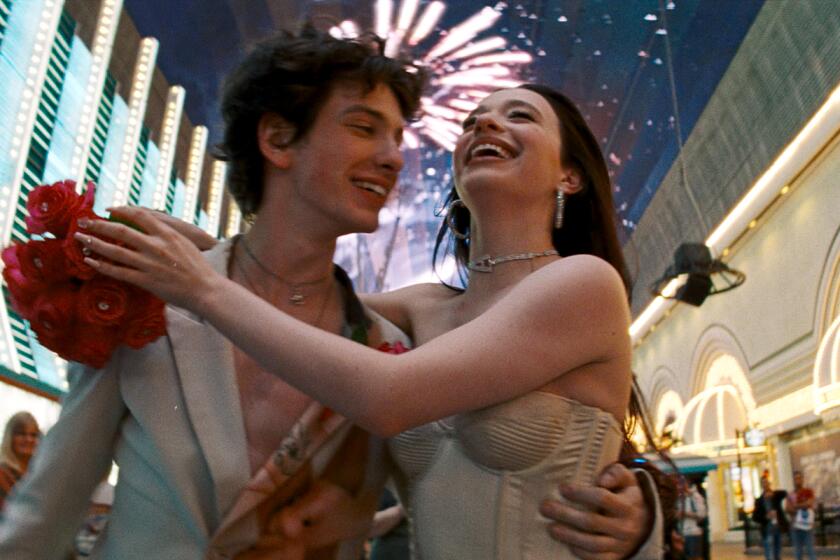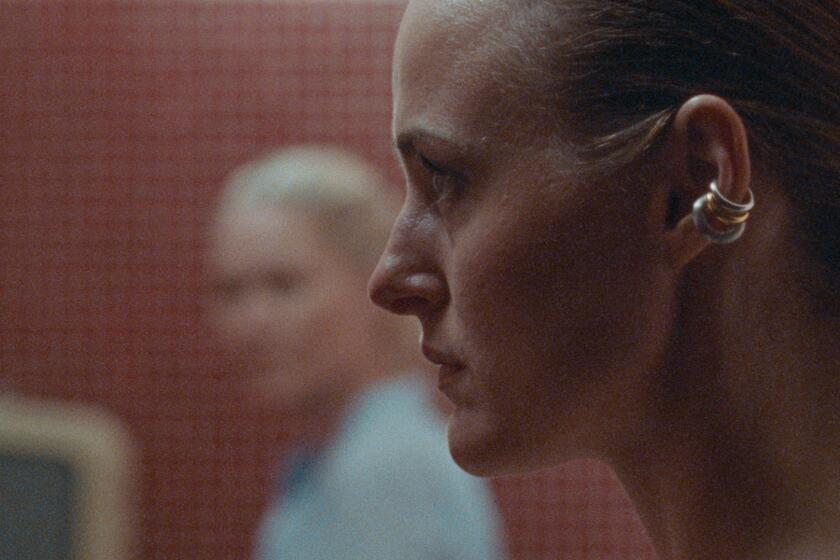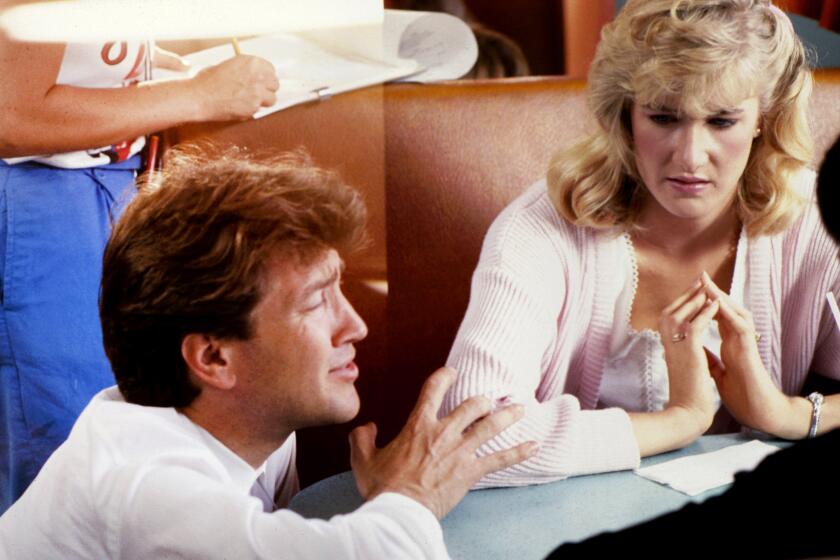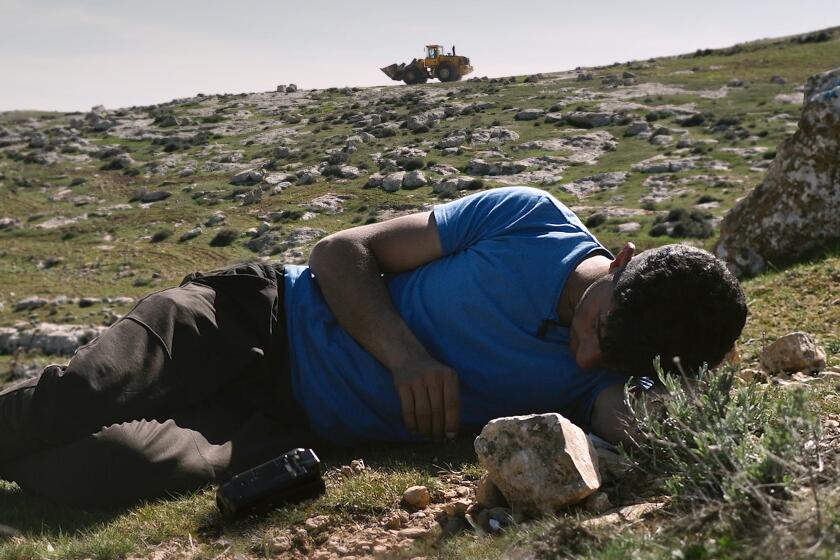Typecast in an urban drama
- Share via
AS Hollywood sees it, there are two and only two kinds of big cities in America: dense, vertical ones in the New York mold, and sprawling, atomized ones such as Los Angeles. It hardly matters that the stereotype has worn more than a little thin.
Much of New York’s recent growth has been horizontal -- the borough of Brooklyn, home to 2 1/2 million people, spreads across 71 square miles -- while Los Angeles, according to the 2000 census, now ranks as the densest metropolitan area in the United States.
No two films in this year’s Oscar race illustrates the continuing appeal of that easy contrast more than Peter Jackson’s high-priced remake of “King Kong,” with its famous climax atop the Empire State Building, and Paul Haggis’ Altman-esque “Crash,” the latest in a long line of cinematic mash notes to L.A., the only city where you can order your alienation to go.
And in both cases it is the physical landscape of the films -- their art direction and set design -- that pushes them to their respective thematic poles and, with mixed results, tries to keep them tethered there.
Most of the time, a movie’s background and setting are meant to reflect not simply the tastes of its characters but also their motivations and fears. That’s certainly true of most Oscar favorites this year. The lonely, largely mute protagonists of “Brokeback Mountain” move across a Western landscape that deserves the same adjectives. The TV journalists in “Good Night, and Good Luck” occupy the smoky close quarters of an era when respected broadcasters barely needed to raise their voices above a whisper to be heard by a wide American public.
“Crash” and “King Kong,” on the other hand, are marked by what might be called architectural determinism, with the built environment shaping the characters and action more than the other way around.
That curious fact becomes obvious within the first minute of “Crash,” which emerged not only as the most polarizing film of the last year but also a best picture nominee. The opening scene unfolds inside a car belonging to an LAPD detective named Graham (Don Cheadle), just after he’s been rear-ended near the scene of a homicide. He wastes no time getting the film’s mission statement out of the way:
“Any real city, you walk, you know? You brush by people; people bump into you. In L.A. nobody touches you. We’re always behind this metal and glass. I think we miss that touch so much we crash into each other just so we can feel something.”
That speech sets the tone for a movie in which architecture is not literally absent but seemingly withheld. (The movie’s art director is Brandee Dell’Aringa, with set decoration by Linda Lee Sutton.) There are occasional shots of recognizable landmarks -- Welton Becket’s Capitol Records tower drifts briefly into view -- and a few scenes take place in kitchens and bedrooms. But the only sets that really count here are the car interiors, just as the film’s most effective makeup is provided by the red glow of taillights.
*
A rudderless existence
DROPPED into a landscape with no hard physical boundaries or limits, the characters in “Crash” merely drift from confrontation to confrontation, their dreams and frustrations as hazily defined as a skyline glimpsed through a blanket of smog. The film’s Los Angeles is empty enough of buildings -- and thus of the watchful, moderating influence of community -- that a young cop (Ryan Phillippe) can torch his car in plain view and attract the attention only of some neighborhood kids.
It’s anonymous enough that the carjacker played by the rapper Ludacris can park a van on a busy street just off Broadway in Chinatown and release a bunch of starving immigrants, smuggled into the U.S. from some unnamed Asian country, onto the sidewalk without anyone looking twice.
This take on Los Angeles, while largely derivative of Nathanael West, Mike Davis and Michael Mann, among others, might have made for a satisfying movie if not for one inconvenient fact. Haggis, it turns out, likes his drama the way the most dogged critics of L.A. like their cities: compact, easily legible and rather tidy, with direct and reliable connections from point A to point B. He sets out to explore the underside of a huge, diverse metropolis that is connected only by freeways and frayed personal bonds, but every time he needs to push the drama forward or heighten the emotion, he resorts to the simplest either/or scenarios, toggling between extremes.
Matt Dillon’s middle-aged cop will behave with absolute selfishness or selflessness, depending on the scene. The TV director played by Terrence Howard, trapped by police in a cul-de-sac, will either have his head blown off or be released outright. The Persian shopkeeper whose store is ransacked will either be completely covered or completely not covered by insurance. Later, when he mistakenly fires his gun at a little girl, he will either kill her or magically leave not a scratch.
This is the ultimate disappointment of “Crash,” a movie that painstakingly crafts an urban landscape of alienation only to decide that alienation -- which tends to be muddle-headed and inward-looking -- is actually kind of boring.
*
A skyline to savor
“KING KONG,” by contrast, emerges as a valentine of sorts not just to skyscraper architecture but also, more broadly, to the drama made possible by density. In choosing to return the movie to its original setting in the 1930s, Jackson manages to siphon off for his own cinematic purposes some of the architectural energy of the period, when Manhattan firms raced one another to build the tallest buildings in the world. When the Empire State Building was finished in 1931, two years before moviegoers would watch King Kong climb to its summit, it prevailed in a fierce vertical competition with the Chrysler Building, topping its rival by 200 feet.
Those two Art Deco skyscrapers weren’t just higher than those around them. They were more beautiful. Never again would corporate buildings work so hard to achieve grace or pay as much attention to small, ornamental details. By 1976, when “King Kong” was first remade, the climactic scene saw the ape straddling the twin towers of the World Trade Center, each of which had twice the bulk of a tapered 1930s skyscraper and none of the elegance.
The notion of art and commerce working in natural tandem, central to so much Art Deco architecture, clearly attracted Jackson to the New York of the period. He has not tried to hide that from the beginning his goal was to turn “King Kong” into a hugely accomplished popcorn movie -- a spectacle that also succeeds at human scale, like the Empire State Building itself. Jackson’s final product is finally too long and too loud to qualify as beautiful. But with a boost from a remarkable CGI version of the 1930s Manhattan skyline, Grant Major, the film’s art director, and Dan Hennah and Simon Bright, who designed the sets, earned a joint nomination in the art direction category.
The early scenes take pains to let us know that 1930s New York, despite the advancing Depression, was a crowded, energetic metropolis. When the action moves to Skull Island, where it will remain for roughly two hours, the surprise is that it carries Manhattan with it.
After sailing for days in search of what we expect is a mere dot in the middle of the ocean, our heroes run aground at a place as crowded and noisy as Times Square. When playwright Jack Driscoll (Adrien Brody) first sees the island’s collection of dinosaurs (the place is a kind of Galapagos Islands for action-movie fanatics, with every possible kind of creature living there, most of them bloodthirsty), they are grazing in a tight bunch, tall and thin and imposing like the towers of Rockefeller Center. When he and his shipmates finally collapse with exhaustion after battling spear-throwing natives and various deadly animals, their sleep is interrupted by a plague of giant worms and crawling insects. They have wandered into the natural world’s version of a crowded Manhattan tenement. King Kong, of course, has the size and sublimity of a piece of great architecture: Once he’s dragged to New York and put on Broadway, producers bill him as the Eighth Wonder of the World.
The movie’s action is pushed forward by the frustrations and the dangers of close quarters. For most of the movie, each character is trying to escape someone or something, either to save his skin or to catch his breath. Indeed, what drives Kong to the top of the Empire State Building is the same impulse that leads him to his favorite Skull Island perch, on the tip of a high outcropping overlooking the ocean: He’s just looking for a place to hide out, to become anonymous and invisible despite his gigantic size and tendency to smash things.
Clearly, he would have been better off heading not up the side of that skyscraper but west, to Paul Haggis’ Los Angeles.
*
Hawthorne is The Times’ architecture critic.
More to Read
Only good movies
Get the Indie Focus newsletter, Mark Olsen's weekly guide to the world of cinema.
You may occasionally receive promotional content from the Los Angeles Times.











